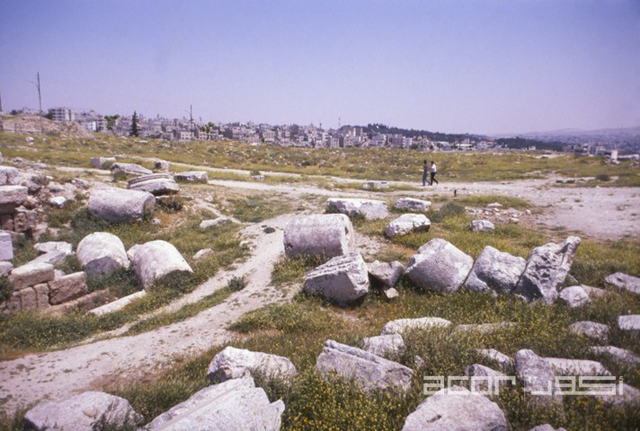AMMAN — The post World War I period marks the beginning of scholarly research in Jordan. During the British Mandate in Jordan, the Department of Antiquities in Amman was founded to coordinate archaeological research within the country, and its first director was George Horsfield (1928–1936).
“After the establishment of the Hashemite Kingdom of Jordan in 1946, G. Lancaster Harding continued to serve as director of the Antiquities Service and he had been in charge from 1936. Harding recorded a number of Ammonite stone statues that had come to light during private construction work starting in the late 1940s,” said a former director of the German Protestant Institute of Archaeology in Amman, Katharina Schmidt.
In 1949, four Ammonite statues were discovered north of Amman Citadel and another Ammonite torso was found four years later in the same area, Schmidt noted, adding that these finds were only the beginning of a long series of discoveries triggered by increasing construction activities, particularly in the greater Amman area.
Other sites, such as Sahab, Meqabelein, Jebel Jofeh, Madaba and Amman Citadel, were of interest to Jordanian and foreign scholars, and they testified about the Iron Age Ammon.
“Starting in the 1950s excavations increased all over Jordan. At that time, missions were still carried out by various foreign institutions located in Jerusalem. Stratigraphy and ceramic typologies for the Bronze and Iron Ages were established with the excavations of large hills,” Schmidt explained, adding that the stratigraphic method of Kathleen Kenyon, developed since the late 1950s at Tall es-Sultan, was a milestone in archaeological research.
Excavation missions began and research expanded into multidisciplinary excavations during the fifties and sixties.
“The Moabite site of Dhiban, where the Mesha Stele was found in 1868, had already been surveyed by Duncan Mackenzie in the early 20th century and from 1950 to 1953, major excavations were conducted under the direction of Fred Winnett, William Reed, and Douglas Tushingham, which, among other things, exposed the massive Iron Age fortification,” the German archaeologist underlined.
The exploration of Edom had already begun with Albright and Glueck, but Crystal Bennett’s excavations initiated a major change since non-biblical narratives guided her research questions and she developed an understanding of the pottery and architectural styles.
“Bennett began excavations in 1958 in Umm Biyara, later in Buseirah and Tawilan and the final publications were post-mortem provided by Piotr Bienkowski, who had worked on these excavations with Bennett,” Schmidt noted.
Meanwhile, Paul Lapp excavated in Tall ar-Rumeith in 1962 and 1967, and finished just one month before the June War, she continued, while James Pritchard’s excavations of the main tall of Tall es-Sa‘idiyeh started in 1964 and also continued until the June War.
“Amman Citadel was another significant centre of research in Jordan and from the late 1960s until now that site was crucial for understanding Amman and its occupation,” Schmidt underlined.
